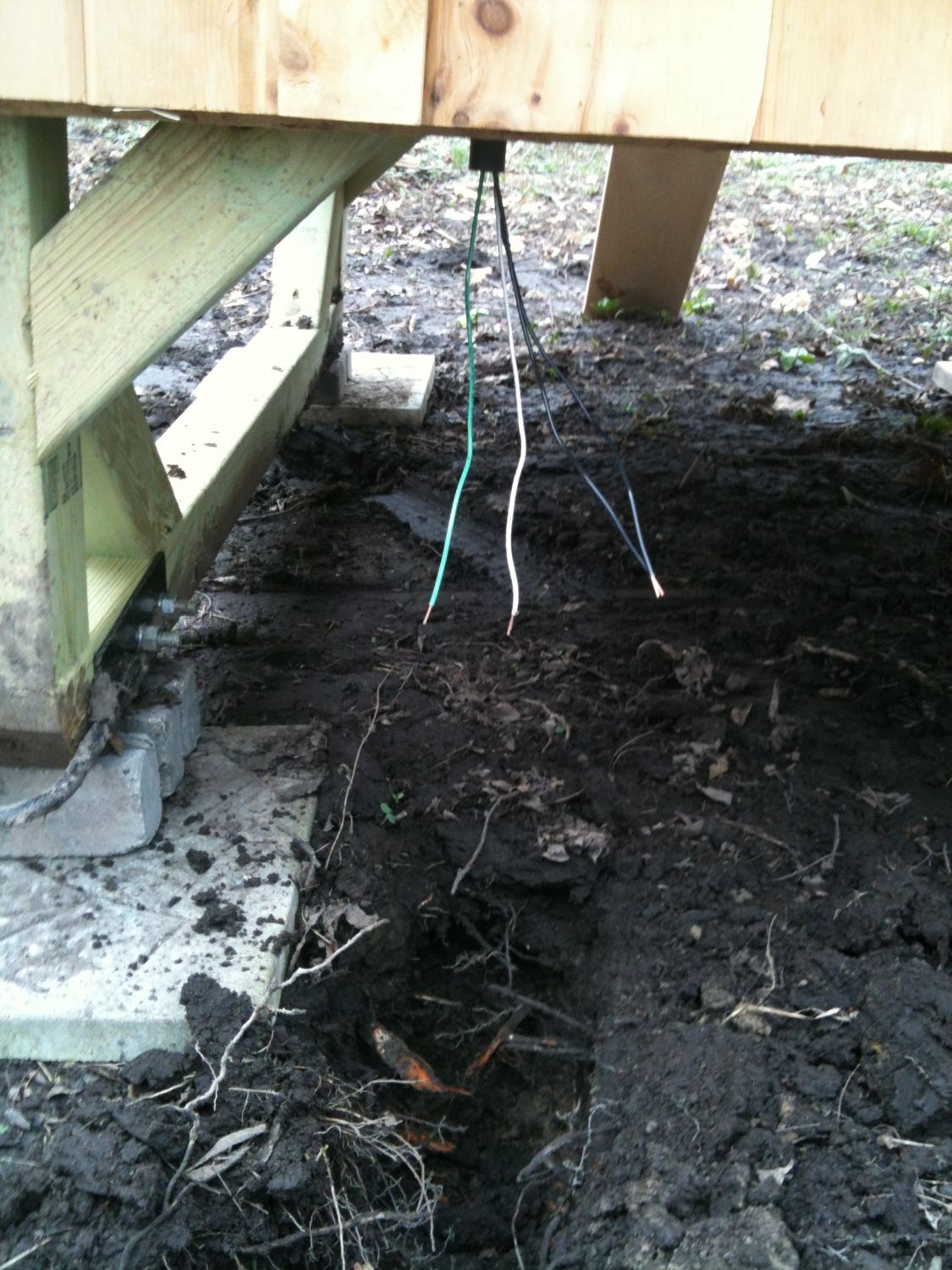- Thread starter
- #41
- Dec 16, 2011
- 883
- 358
- 306
March 19
During lunch I stopped at the local provider of man tools and picked up the electrical "stuff" to run power to the coop.
Wife took her mother shopping so I have the whole evening to play.
I had previously wired the coop and stub out a 1/2" conduit.

And in the previous post I mentioned I was lucky for living in a woods, well lucky until I tried to dig a trench in the wet clay through all the tree roots. But I had only 15' to dig and being a bit on the stubborn side helped.

Got the trench dug. Since the distance between the coop and my shop is only 15' I directed buried the electrical cable. Depth of the cable should be below the frost level. Ran 14 gage (with ground) cable into the coop conduit and glued the fittings together and connected the wires.

Lay the cable in the trench and covered. Then ran conduit up the shop porch post on the backside (coop side) so it can't be seen from the house side of the post.

Now was a good time to provide for a electrical receipt that will come in handy when I build the secured chicken run. At this electrical receipt location is where I made the transition from buried electrical cable to interior cable.

VERY VERY IMPORTANT. For the receipt use a GFI. Think about it. A waterer sitting on top of a electrical water heater. Or a Nut with the bright idea of using a power saw to cut tree roots while standing in wet clay. It would be bad to have Kentucky fried chickens, it would be worse to 120 volts cursing thru your body as your life flashes (literally) before you.

Shop is 20' x 30' (NO IT WOULD NOT MAKE A GOOD COOP!). So I had purchased 50' of 14/2 electrical cable to go from the GFI receipt to the shop's circuit breaker panel. I was 2' too short. So on to Plan B which to installed electrical receipt inside the shop above the circuit breaker box. Tomorrow's lunch hour I'll walk up to the local hardware and see if I can buy 10' of 14/2.
Better idea! Anyone know where I can rent a cable stretcher?
During lunch I stopped at the local provider of man tools and picked up the electrical "stuff" to run power to the coop.
Wife took her mother shopping so I have the whole evening to play.
I had previously wired the coop and stub out a 1/2" conduit.

And in the previous post I mentioned I was lucky for living in a woods, well lucky until I tried to dig a trench in the wet clay through all the tree roots. But I had only 15' to dig and being a bit on the stubborn side helped.

Got the trench dug. Since the distance between the coop and my shop is only 15' I directed buried the electrical cable. Depth of the cable should be below the frost level. Ran 14 gage (with ground) cable into the coop conduit and glued the fittings together and connected the wires.

Lay the cable in the trench and covered. Then ran conduit up the shop porch post on the backside (coop side) so it can't be seen from the house side of the post.

Now was a good time to provide for a electrical receipt that will come in handy when I build the secured chicken run. At this electrical receipt location is where I made the transition from buried electrical cable to interior cable.

VERY VERY IMPORTANT. For the receipt use a GFI. Think about it. A waterer sitting on top of a electrical water heater. Or a Nut with the bright idea of using a power saw to cut tree roots while standing in wet clay. It would be bad to have Kentucky fried chickens, it would be worse to 120 volts cursing thru your body as your life flashes (literally) before you.

Shop is 20' x 30' (NO IT WOULD NOT MAKE A GOOD COOP!). So I had purchased 50' of 14/2 electrical cable to go from the GFI receipt to the shop's circuit breaker panel. I was 2' too short. So on to Plan B which to installed electrical receipt inside the shop above the circuit breaker box. Tomorrow's lunch hour I'll walk up to the local hardware and see if I can buy 10' of 14/2.
Better idea! Anyone know where I can rent a cable stretcher?
Last edited:


















